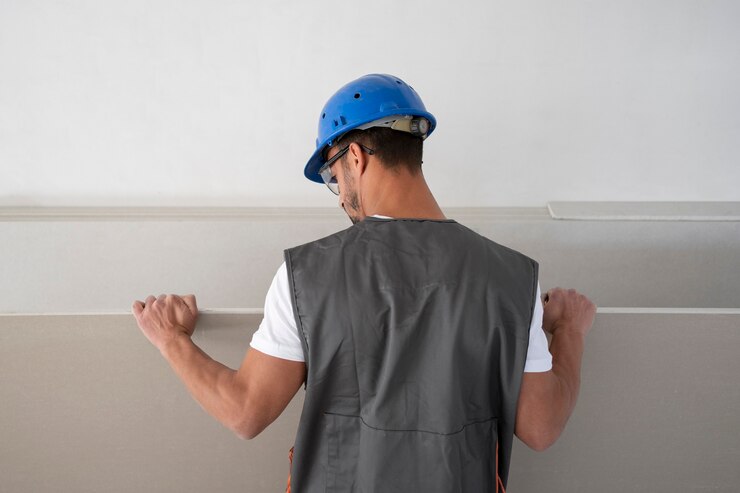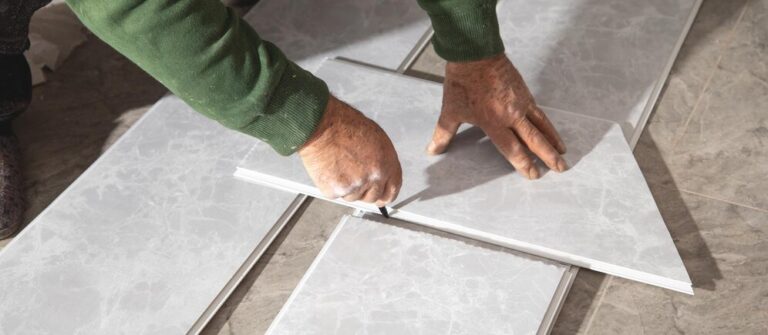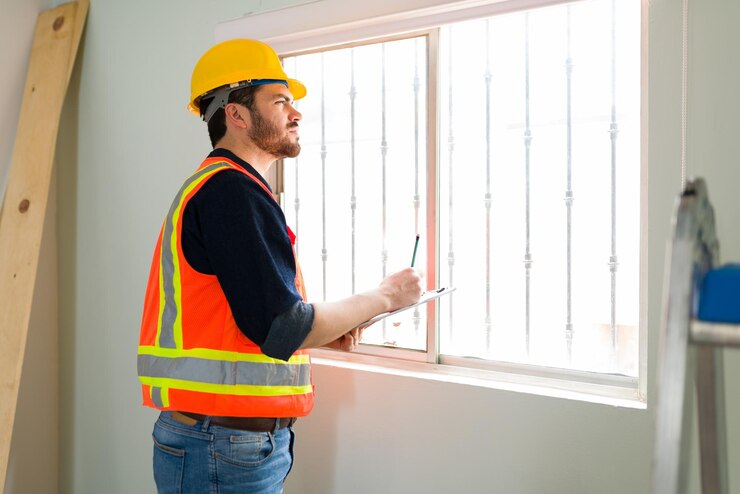How Much Do Drywall Installers Make?
Drywall installation is a skilled trade that plays a crucial role in the construction and renovation of residential and commercial spaces. While perhaps less celebrated than other construction trades, drywall installers provide a vital service in finishing the interiors of buildings, a task that requires precision and expertise. As with any profession, those considering a career in drywall installation are likely curious about the potential earnings they can expect in this field.
Salaries for drywall installers can vary widely based on a number of factors, including geographic location, experience, and the current market demand for their services. Entry-level drywall installers may start with hourly wages, while seasoned professionals may command higher pay rates or negotiate salaries based on their refined skills and speed. Additionally, the structure of payment, whether hourly wages or piecework, as well as opportunities for advancement in the industry, can influence overall earnings. In an ever-evolving job market, keeping abreast of the latest trends and demands is important for those in the trade to maximize their earning potential.
Key Takeaways
- Drywall installers’ salaries are influenced by experience, location, and market trends.
- Payment structures and advancement opportunities can affect earnings in the drywall industry.
- Professional development can lead to increased earning potential for drywall installers.
Drywall Installer Overview
Drywall installers play a pivotal role in the construction industry. They are skilled tradespeople responsible for the installation of drywall panels, which are crucial components of interior construction.
What are the Role and Responsibilities of a Drywall Installer?
Drywall installers are tasked with measuring, cutting, and affixing drywall panels to walls and ceilings. Their responsibilities include:
- Reading blueprints: to determine panel sizing and placement.
- Measuring and marking: for cuts and assemblies on drywall materials.
- Cutting and fitting drywall panels: into frames and around fixtures.
- Fastening panels: to interior wall studs and ceiling joists.
- Applying tape and compound: to fill in joints and ensure a smooth surface.
- Finishing: sanding down rough spots to create a uniform surface ready for painting or wallpapering.
What is the Industry Outlook for Drywall Installers?
The industry outlook for drywall installers remains positive, with a steady demand driven by the consistent need for their skills in residential and commercial construction. Factors influencing the industry include:
- Construction trends: Growth or decline in the construction industry directly impacts demand.
- Location: Areas with more building activity typically have higher demand for drywall installers.
- Economic cycles: Construction tends to ebb and flow with the economy, which can affect job availability.
They typically work as subcontractors or are employed by drywall installation companies. With experience, some installers may advance to become a drywall contractor, overseeing entire projects and crews.
Understanding Drywall Installer Salaries
Drywall installer salaries can vary, reflecting aspects such as experience, location, and additional skills. It’s important for one to consider the full spectrum of compensation, which includes both hourly wages and annual salary figures.
What Are the Components of Salary?
A drywall installer’s salary generally consists of a few key components:
- Base Salary: This is the primary component, often expressed as an hourly wage or an annual salary.
- Overtime: Many construction jobs, including drywall installation, may offer overtime pay.
- Benefits: These may include health insurance, retirement plans, and other non-wage compensation.
Hourly rates can range widely, from around $14.64 to $45.96 per hour, depending on a variety of factors. The average hourly pay is much discussed in the industry, often seen as a benchmark for what one can expect to earn in this field.
What Insights Can a Salary Report Offer?
Drywall installer salary reports can illustrate:
- Average Salary: Salary.com reports that the national average for drywall installers in the United States is approximately [$52,248 annually] as of March 2024.
- Salary Range: These ranges suggest the spread between the lower and upper bounds of earnings, wherein pay range can be significantly influenced by one’s experience and geographic location.PercentileHourly WageAnnual Salary25th$19.23[$43,289](https://www.salary.com/research/salary/benchmark/drywall-installer-salary)50th (Median)$29.43[$61,220](https://www.glassdoor.com/Salaries/drywall-installer-salary-SRCH_KO0,17.htm)75th$25.24[$63,142](https://www.salary.com/research/salary/benchmark/drywall-installer-salary)
- Salary Estimates: These are frequently derived from histograms and data collections, offering a more detailed view that includes comparisons to related jobs and hourly compensation adjustments.
- Additional Pay: Earned through bonuses, profit sharing, or commission, this component can add up to several thousand dollars to the base salary. For example, additional pay can be around [$3,461 per year].
Salary reports are instrumental in shedding light on the financial prospects within the drywall installation industry, providing a confident knowledgeable look at what these skilled laborers can anticipate in terms of earnings.
Influences on Drywall Installer Earnings
Drywall installer earnings can vary significantly based on different factors such as experience, certifications, and geographic location. Understanding these influences can give a clear perspective on potential income in this trade.
How Does Experience and Seniority Affect Earnings?
Experience is a major factor in the earnings of a drywall installer. Starting salaries often increase as an installer gains more years of experience in the industry. For example, an installer with over five years of experience can potentially earn more than those who are just entering the field. According to Salary.com, the average Drywall Installer salary in the U.S. as of early 2024 suggests a range that reflects this trend, with seniority playing a key role.
Do Education and Certifications Influence Income?
While formal education may not be strictly necessary for a career in drywall installation, acquiring certifications or completing an apprenticeship can lead to higher pay. Industry-recognized certifications can elevate an individual’s credibility and signify a higher skill level which employers often reward with increased compensation.
What Are the Location-Based Variations in Pay?
Geographical location significantly influences drywall installer incomes due to the varying cost of living and demand from state to state. For instance, states with a higher cost of living, like California and New York, tend to offer higher average salaries compared to states like Mississippi or West Virginia, reflecting the economic diversity across the U.S.The availability of work and prevailing wages in areas like Washington, Massachusetts, or Hawaii can also impact average incomes in the field, often aligning with the cost of living and local housing markets.
Comparing Drywall Installer Earnings
Drywall installers’ salaries vary widely across the United States, with differences reflecting factors such as location, demand, and cost of living.
By States
Which states offer the highest pay for drywall installers?
In the United States, drywall installer earnings fluctuate based on the state of employment. While some states offer higher wages due to a stronger economy or a higher cost of living, others may offer less. For example, as of March 26, 2024, the average drywall installer salary is reported to be $52,248, but this figure can differ substantially between states.
By Cities
Which cities are known for the highest paying drywall installer jobs?
Within the states, earnings can vary even more when comparing cities. Certain cities might offer a higher salary to drywall installers due to local economic conditions, the scope of construction projects, or a shortage of skilled labor. The CareerExplorer website mentions that wages start from $14.64 per hour and can go up to $45.96 per hour. High paying cities often correlate with high living costs, which is essential for workers to consider. Additionally, Glassdoor’s salary estimates suggest that the total pay for a drywall installer can reach up to $64,681 per year, reflecting the combination of base salary and additional pay that can be found in some of the better-compensated cities.
Payment Structures for Drywall Installers
Drywall installers can receive different types of compensation for their work, including hourly or salary wages, pay for specific projects, and potential overtime compensation. Understanding these payment structures is crucial for both employers and drywall installation professionals.
What Is the Difference Between Hourly vs. Salary Pay?
Hourly Pay: Drywall installers often earn an hourly wage, which fluctuates depending on geographic location, experience, and the prevailing wages in the construction industry. As reported by Salary.com, hourly rates typically range from $21 to $30, with an average hourly pay of $25.
Salary Pay: In some cases, drywall installers may be compensated with a fixed salary. This type of payment is generally accompanied by a consistent schedule, which can provide more stability than hourly compensation. However, salary data specific to drywall installers is less commonly disclosed in aggregate salary reports.
How Does Project-Based Pay Work?
Project-Based Pay: Some contractors may offer drywall installers pay based on individual projects. In this case, compensation is agreed upon before the project’s commencement and is typically reflective of the project’s scope and complexity. Contractors may determine project pay by combining the estimated hours the job will take by the standard hourly rate, or via a flat rate for the entire project.
What Are Overtime Considerations for Drywall Installers?
Overtime Pay: When drywall installers work beyond their standard weekly hours, which is often 40 hours in the United States, their hourly wage may be calculated at an increased rate for overtime as required by law. This overtime rate is typically 1.5 times the installer’s standard hourly pay. It can significantly impact overall weekly pay, especially on extensive projects requiring extended work periods.
Advancement Opportunities and Earnings
In the field of drywall installation, one’s potential for advancement and corresponding earnings are closely linked to their experience and seniority. Opportunities for higher income and advanced job titles are available for those who demonstrate skill and dedication.
What Are the Career Pathways for Drywall Installers?
Drywall installers can enhance their careers and potential earnings by gaining experience, acquiring specialized certifications, and demonstrating leadership qualities. Beginners typically start as apprentices and may advance to journeymen as they accumulate on-the-job training and hours. With time and dedicated effort, they can reach supervisory roles such as foreman or site supervisor, and potentially move into project management. For those who seek entrepreneurship, starting a drywall installation business presents another avenue for career growth.
How Does Job Title and Pay Vary in Drywall Installation?
- Apprentice: Starting out, drywall installers may earn on the lower end of the pay scale but can increase their hourly rate with each year of experience.
- Journeyman: Upon reaching journeyman status, pay increases considerably. Data suggests an average hourly wage of $22.74, but specific earnings vary based on region and demand.
- Supervisor/Manager: Individuals in supervisory or management positions can anticipate further increases in pay, aligning with their added responsibilities.
Career progression in this trade often reflects one’s level of expertise and the range of skills mastered, with increases in pay corresponding to the value and efficiency one brings to a project. For instance, the average yearly salary for a drywall installer in the United States is approximately $52,248, but with advancement, drywall installers turn their years of experience into increased earning potential and responsibility.
Market Trends Affecting Drywall Installer Wages
The wages of drywall installers are influenced by a variety of market trends, including fluctuating economic conditions and employment patterns within the construction industry.
What Economic Factors Influence Drywall Installer Wages?
Economic factors play a significant role in determining the wages of drywall installers. A robust economy can lead to an increase in construction projects, which in turn elevates the demand for skilled drywall installers. For instance, the average hourly wage for a drywall installer in the United States was reported at $25 as of March 2024, reflecting an economic period where construction activity might be on the rise. Conversely, economic downturns often result in a decrease in construction spending, which can reduce the availability of drywall installer jobs, and put downward pressure on wages.
How Do Employment Trends Affect Drywall Installer Wages?
Employment trends are directly correlated with wage levels in the drywall installation industry. An increase in employer job postings for drywall installers suggests a growing industry need, which can lead to higher wages as employers compete to attract qualified workers. On the other hand, a saturation of the labor market with drywall installers can result in lower wages due to a surplus of workers. The balance of supply and demand for drywall installer jobs in the industry is therefore a critical aspect that shapes current wage trends.
It is essential to understand that wage data in job postings and salary reports represents snapshots of the market at given points in time, reflecting the immediate impact of these trends on the earnings of drywall installers.
Tools for Drywall Installer Salary Research
When researching drywall installer salaries, individuals have access to a variety of online tools that offer salary reports, estimates, histograms, and comparisons. These resources can help provide a clearer picture of potential earnings.
Online Salary Calculators: What Can They Tell You?
Online salary calculators are invaluable tools for drywall installers looking to gauge their earnings. They typically require users to input their location, experience level, and sometimes specialized skills to generate personalized salary reports. For instance, the calculator on Salary.com provides a range from average to high-end salaries, alongside salary histograms that show the distribution of earnings across the industry.
Professional Organizations’ Resources: How Do They Enhance Understanding?
Professional organizations often offer resources that include comprehensive salary estimates and comparisons. They may produce detailed annual or biannual salary reports that include data from members which can give a drywall installer insight into how their earnings compare to peers within the same geographical area or skill level. For example, resources like PayScale offer a wealth of information including potential additional pay components like bonuses and overtime.
Crafting a Career as a Drywall Installer
In the construction industry, drywall installers, also known as drywallers or hangers, play a critical role in finishing interior spaces. These professionals are responsible for measuring, cutting, and securing drywall panels, working with materials like plasterboard or gypsum board to create walls and ceilings.
Finding Job Opportunities
Where can drywall installers find employment opportunities? Drywallers typically find job openings through construction companies, contractors, or by checking job boards. Networking within the industry can reveal unadvertised positions. Employment can range from residential to commercial projects, and some may specialize further as ceiling tile installers or framers.
Negotiating Salaries
How should drywall installers approach salary negotiation? The average hourly wage for a drywall installer in the United States varies widely depending on experience, skill level, and the region they are working in. As of early 2024, hourly rates can range from approximately $21 to $30. When negotiating, drywallers should consider their level of expertise, including any specializations in framing or sanding, which can impact their earning potential. For salary discussions, detailed knowledge of current wage trends is advantageous.
Role-Specific Skill Development
In the career of a drywall installer, advancing one’s skills can directly impact earning potential. Focusing on technical skills enhancement and obtaining relevant certifications and training are crucial steps to increasing one’s value and expertise in the field.
What Technical Skills Do Drywall Installers Need to Enhance?
Technical skills are the foundation of a drywall installer’s profession. They must possess a comprehensive understanding of the materials such as plaster and tools like sanders used in the trade. Enhancing these skills involves:
- Measuring and Cutting: Accurately measuring and cutting drywall to fit the specific dimensions of a room or surface area.
- Installation: Expertly installing drywall panels onto walls and ceilings, ensuring they are perfectly aligned and secure.
- Finishing: Applying plaster and sanding for a smooth finish, a critical step for a paint-ready surface.
How Do Certifications and Training Benefit Drywall Installers?
Continuous education through certifications and training can provide drywall installers with an edge in the competitive market. They offer:
- Certifications: Recognized credentials that validate an installer’s expertise and adherence to industry standards.
- Apprenticeships: On-the-job training programs that combine technical instruction with practical experience.
By focusing on these areas, drywall installers can significantly enhance their craft and, consequently, their earning potential in the construction industry.
Frequently Asked Questions
These FAQs shed light on the earnings and career aspects of drywall installers, providing valuable information for individuals considering the trade.
What is the average hourly wage for drywall installers?
Drywall installers earn an average hourly wage of $23.09, with wages generally ranging from $14.64 at the lower end to $45.96 for more experienced workers.
What is the annual salary range for drywall installers?
The annual salary for drywall installers in the United States typically falls between $43,289 and $63,142, with variations based on experience, location, and additional skills.
Which states offer the highest salaries for drywall finishers?
While comprehensive state-by-state salary data for drywall finishers is not provided, they can explore platforms like Glassdoor which offer insights into the market and average earnings in different regions.
Are there educational or training requirements for becoming a drywall installer?
There are no stringent educational prerequisites, but drywall installers generally benefit from on-the-job training or apprenticeships where they learn the necessary skills and techniques in the field.
Can drywall installation be considered as a physically demanding job?
Yes, drywall installation is indeed a physically demanding job, entailing tasks such as lifting heavy materials, standing for extended periods, and working with hands and tools.
What is the income potential for owning a drywall installation business?
Drywall contractors, who often run their own businesses, report an average base salary of $42,304 annually, but the total income potential can be higher depending on the scale and success of their business operations.






